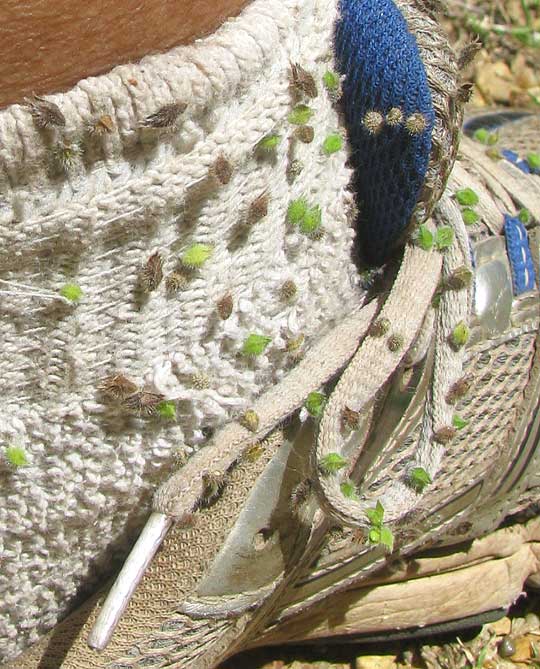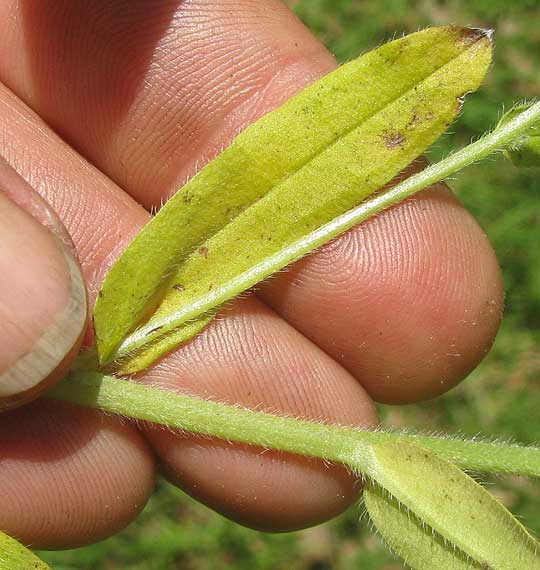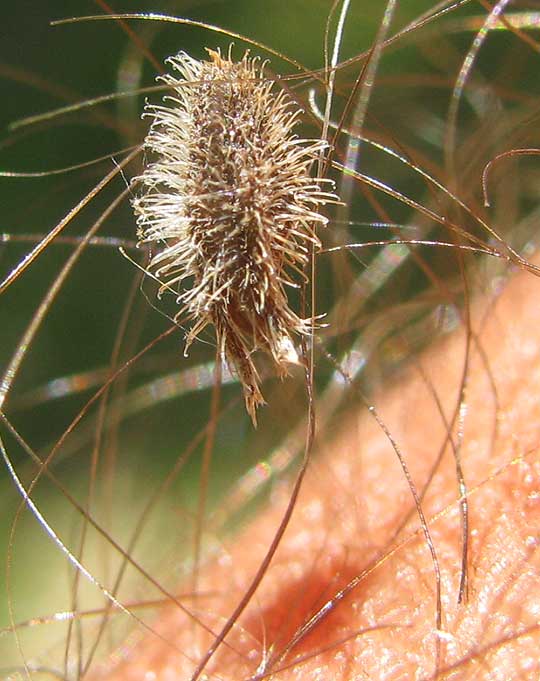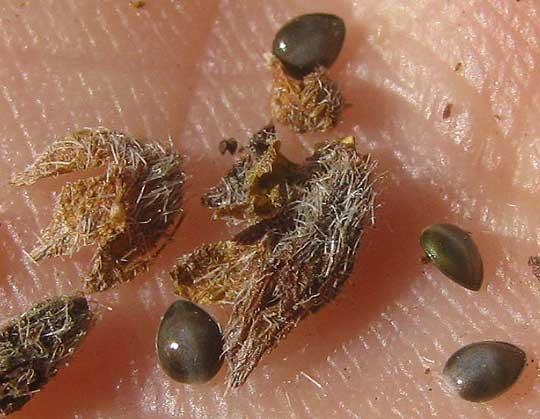Excerpts from Jim Conrad's
Naturalist Newsletter

from the the April 29, 2012 Newsletter issued from the woods of the Loess Hill Region a few miles east of Natchez, Mississippi, USA
"BEGGAR'S LICE" ON MY SOCKS
Earlier this week mornings were so chilly -- down to 49°F (9°C) -- that I wore shoes and socks until it warmed up. You can see what my shoes and socks looked like after wandering around one morning below:

Several kinds of plants produce stickery little fruits like that and they all can be called Beggar's Lice. When I tracked down the plant attaching its "lice" to me, it was what's shown at the top of this page. Several beggar's-lice-producing plants are similar to that, so before being sure what I really had I had to "do the botany." Here are details I focused on:
Leaves and stems were hairy, and leaves were rounded toward the base, sometimes clasping the stem, as shown below:

A close-up of a "beggar's louse" is shown stuck in my arm hairs below:

That last picture is sort of tricky. For, you expect the thing stuck to you to be a fruit with hooked spines, but the thing in the picture isn't a fruit. It's actually a baglike calyx surrounding much smaller fruit-like things. I crumbled some calyxes between my fingers and part of what resulted is shown below:

The four shiny things are not seeds. Maybe you've seen that the ovary of most mint flowers is divided into four more-or-less distinct parts. Each of those parts is called a nutlet, and that's what you're seeing. But other plant families beside the Mint produce nutlets.
Our beggar's-louse-producing plant is MYOSOTIS MACROSPERMA, a member of the Borage Family, the Boraginaceae, which on the phylogenetic Tree of Life is adjacent to the Mint Family. Myosotis macrosperma is a native to the eastern US and Ontario.